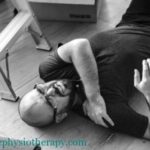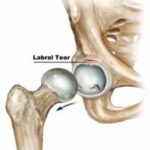How Physiotherapy is an Alternative to surgery in Meniscal Tear
In young adults, with a knee-twisting activity like skiing, playing basketball, football, or slipping on the ice, tears a meniscus. The patient usually opts for surgery. But a torn meniscus is often seen in the 9 million Americans with knee osteoarthritis, and for them, the best course of action hasn’t been crystal clear. Results of the Meniscal Tear in Osteoarthritis Research (MeTeOR) trial published in the New England Journal of Medicine indicate that physical therapy may be an alternative to surgery.
Surgeons at Harvard-affiliated Brigham and Women’s Hospital and six other large hospitals recruited 351 men and women with symptom-causing knee osteoarthritis and a meniscal tear. Half completed a six-week physical therapy program aimed at easing inflammation, strengthening muscles supporting the knee, and improving the knee’s range of motion. The other half underwent a procedure called an arthroscopic partial meniscectomy, in which unstable pieces of the meniscus are removed and the remaining edges are smoothed, followed by the same physical therapy program.
Participants in both groups reported similar improvements in knee function and pain at six and 12 months.
How is Physiotherapy an Alternative to surgery for Rotator cuff tears
A recent study from Finland asserts that when it comes to the treatment of nontraumatic rotator cuff tears, physical therapy alone produces results equal to those produced by arthroscopic surgery and open surgical repair. According to the study’s authors, follow-ups of 167 shoulders treated show that “conservative treatment should be considered as the primary treatment for this condition.”
The research, published in the January issue of bone and joint journal, was built around the treatment of 173 patients aged 55 and older (mean age 65) with supraspinatus tendon tears. Patients were assigned to 3 groups: the first group received physical therapy only; the second group received acromioplasty and physical therapy; and the third group was treated with rotator cuff repair, acromioplasty, and physical therapy. Each group contained similar age ranges and equal distribution by sex. After exclusions and drop-outs, 167 shoulders were available for assessment.
Components of the physical therapy treatment remained the same across groups. When patients were assessed using the Constant score at 3 months, 6 months, and 1 year, researchers found substantial similarity in rates of improvement. “Contrary to the hypothesis, surgical repair of a supraspinatus tear does not improve the Constant score when compared with acromioplasty only or conservative treatment. Additionally, the patients’ subjective satisfaction ratings were the same for all 3 approaches.
So We Can see here how Physiotherapy again Proves to be an alternative to surgery.
Physical Therapy as good as surgery for Torn Cartilage and Arthritis!
The featured study, also published in NEJM, claims to be one of the most rigorous studies yet comparing treatments for knee pain caused by either torn meniscus or arthritis. According to the Washington Post:
“Researchers at seven major universities and orthopedic surgery centers around the U.S. assigned 351 people with arthritis and meniscus tears to get either surgery or physiotherapy. The therapy was nine sessions on average plus exercises to do at home, which experts say is key to success.
After six months, both groups had similar rates of functional improvement. Pain scores also were similar.
Thirty percent of patients assigned to physical therapy wound up having surgery before the six months was up, often because they felt therapy wasn’t helping them. Yet they ended up the same as those who got surgery right away, as well as the rest of the physical therapy group who stuck with it and avoided having an operation.”
Another study published in 2007 also found that exercise was just as effective as surgery for people with chronic pain in the front part of their knee, known as a chronic patellofemoral syndrome (PFPS), which is also frequently treated with arthroscopic surgery. The study compared arthroscopy with exercise in 56 patients with PFPS. One group of participants was treated with knee arthroscopy and an eight-week home exercise program, while a second group received only the exercise program. At the end of nine months, patients in both groups experienced similar reductions in pain and improvements in knee mobility.
A follow-up conducted two years later still found no differences in outcomes between the two groups.
In an editorial about the featured study, Australian preventive medicine expert Rachelle Buchbinder of Monash University in Melbourne urges the medical community to change its practice and use physiotherapy as the first line of treatment, reserving surgery for the minority who do not experience improvement from the therapy.
Avoid surgery for sciatica/slip disc problem with Physiotherapy
In many pieces of research, comparison of clinical success and effectiveness of both surgery and Physiotherapy in patients with lumbar disc herniation has been carried out. More than 60% of patients with sciatica/disc prolapse who had failed other medical management benefited from spinal manipulation to the same degree as if they underwent surgical intervention.
Surgery should always be considered when you don’t have another choice and you’ve exhausted all your options. Not only in orthopedic cases but in neurological and cardiac conditions surgeries can be avoided or patients can be prevented to reach a stage of surgery through graduated exercise programs.
So by reading all the above facts we can say that in a lot of cases Physical therapy is an alternative to surgery.





